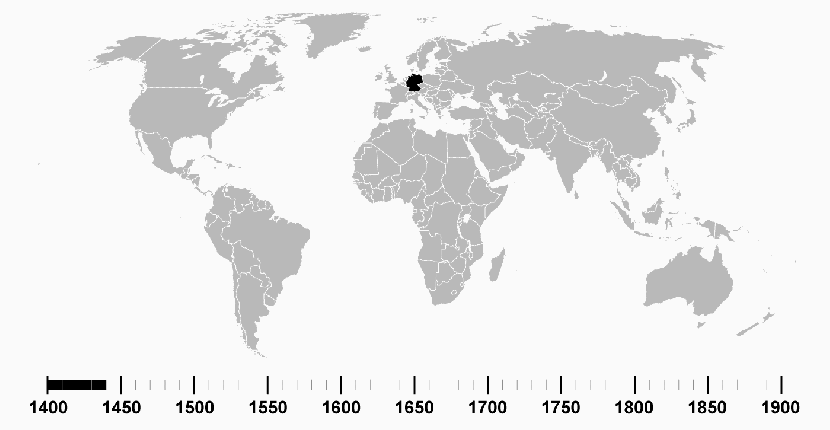Category: Printing
The Shape of Things to Come
The 3.5in x 2in rectangle is tried and true, but it’s worth reconsidering if a different shape may better communicate your business – and make an even bigger impact.
La Charcuterie, a gourmet deli and restaurant in Vancouver, uses circular cards that resemble slices of salami. Brilliant!
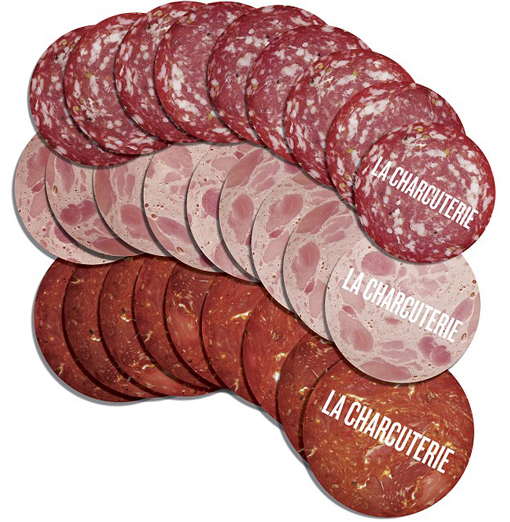
One drawback to the circular card concept, however, is holding it. It surely won’t get lost in a stack of traditional cards, but it also won’t fit in a traditional card holder or wallet. Depending on your business, this may or may not be a big problem, but there may be a solution. The cards below fold and tear, respectively, to help them travel a bit easier with their rectangular companions.

Other cards can take shapes of their own that still fit within the traditional dimensions using simple die-cuts.
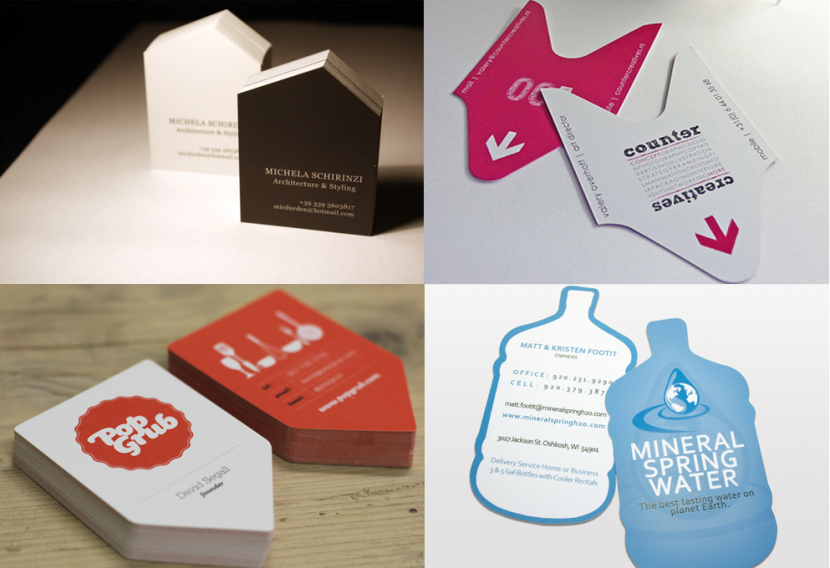
(Clockwise: Michela Schirinzi, Counter Creatives, Mineral Spring Water, Pop Grub)
The Catalog Comeback
Though e-commerce makes up just a fraction of total retail sales, that fraction is steadily and rapidly increasing – online business is booming, we know this. But what you may not know is that printed catalogs are one of the most influential sources for information when making online purchases. Print catalogs are even more influential in driving online sales than some online channels.
Why print?
According to Sarah Knup, head of strategy and marketing at childrenswear brand Tea Collection, “We see the catalog as more relevant as a true storytelling and brand piece… You don’t get the same feeling when you’re flipping through a PDF.” Catalogs are making a comeback, with many retailers increasing their catalog spend. Even online-only retailers are beginning to mail catalogs of their own. The investment is a wise one – research by the US Postal Service shows that online shoppers who receive a catalog piece spend 28% more than those who don’t.
Just take a look at Zappos Life. Though Zappos is an online-based retailer, per-transaction sales from its catalog are twice that of the website.

There’s Something About Print
There is something about having that large expanse of real estate in your lap, something about the format, that is extremely satisfying… Having many different things you may be interested in on a page, as opposed to a single thing surrounded by ads as it is on the web, leads to the formation of different connections and leads to a different experience.
 That’s Kevin Kelly of Wired describing just some of the value of his recently printed book Cool Tools. The book was just published in December, but Cool Tools isn’t new – the website has been actively collecting curated reviews of tools for 10 years. Now, Kelly has taken 1,500 reviews from the website and created an over-sized 472-page book that retails for $39.99.
That’s Kevin Kelly of Wired describing just some of the value of his recently printed book Cool Tools. The book was just published in December, but Cool Tools isn’t new – the website has been actively collecting curated reviews of tools for 10 years. Now, Kelly has taken 1,500 reviews from the website and created an over-sized 472-page book that retails for $39.99.
It sounds like a strange idea – and maybe it is – but it worked. The first printing sold out immediately. The reviews are glowing, and as one Amazon reviewer explained: “Yes, you’ve already read (or could read) much of the content on the site, but the book format (and the fact this is a hand-picked subset of the reviews from the blog) adds context and flow… It is a nicely realized, physical thing.”
Image via Joel Arbaje for Fast Company.
Curb the Clutter With Direct Mail
Given the avalanche of marketing messages we’re exposed to on a daily basis, it stands to reason that authentic, engaging messages are more likely to get a response. Most messages go virtually unnoticed, skimmed or purposely ignored – no one’s looking for the needle in the haystack. And why should they?
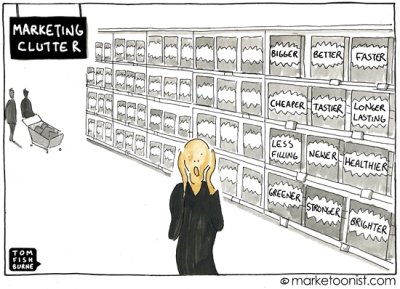 Rather than expect your customer to notice you amidst the clutter, do something that stands out… easier said than done, I know. But believe it or not, some of the most engaging messages are the simplest.
Rather than expect your customer to notice you amidst the clutter, do something that stands out… easier said than done, I know. But believe it or not, some of the most engaging messages are the simplest.
If you haven’t seen PRINTISBIG.com, take a look:
Print is an effective and important tool you should never forget… While the digital marketing space has gotten noisier and considerably less effective, print has enjoyed a renaissance of increased conversion rates and marketing return on investment. Customers actually appreciate getting a nice postcard, well-designed catalog, or personal thank you note in the mail today.
According to the stats, US advertisers can see a 1300% ROI on direct mail, and direct mail is responsible for an incredible 78% of donations for non-profits. It makes sense if you consider that 80% of households read or browse their direct mail (yes, 80%!). And according to the USPS, shoppers who receive direct mail actually spend more than those who don’t.
Cartoon by Tom Fishburne.
10 Opinions on Promotional Products
EXHIBITOR Magazine has collected the following 10 expert opinions on promotional products.
Brochures: Power in Your Pocket
Brochures are possibly the most flexible and hard-working of your marketing collateral. They can help initiate a sale or close one; they can be sent in the mail or handed out face-to-face. As John Treace wrote for Inc., “One of the biggest sales I ever made was initiated in an elevator with a brochure that I happened to have in my pocket.”
To showcase a configurable furniture collection, Miller Brooks created this brochure for Kimball Office.
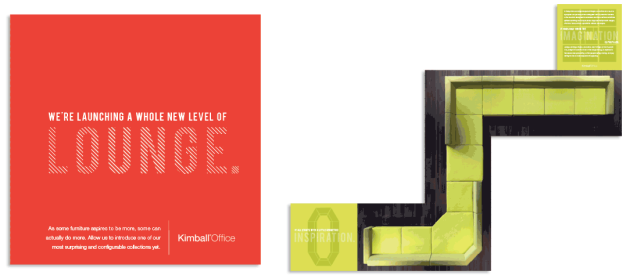
This brochure for TVNZ 7 (Television New Zealand) literally unfolds to form the brand’s “7” logo.

Audi’s engaging centennial piece, when ripped open, features a timeline of the brand’s history.
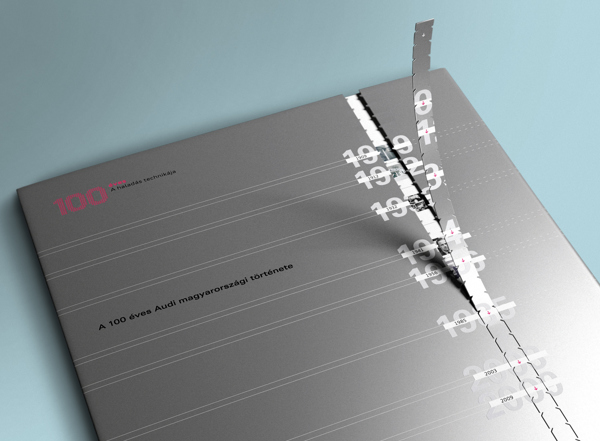
To celebrate Pratt Institute’s 125th anniversary, this brochure includes die-cut pop-ups of iconic artists and their designs.
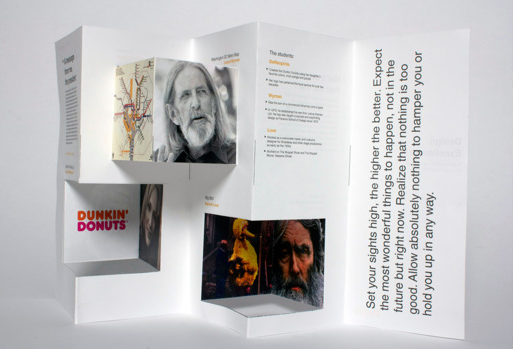
What’s a Trade Show Without the Giveaways?
A [trade show] booth without a giveaway could be viewed as heresy…
That’s a quote from trade show specialist Janice Breuer. Lest you be viewed as a heretic, define your strategy for promotional giveaways.
 Qualify
Qualify
Giveaways will attract attendees to your booth… it’s then your job to determine if they are qualified leads. Eighty-one percent of attendees have buying authority, and you can probably imagine how many pens they’ve already accumulated. Increase memorability with a limited run of more expensive giveaways exclusively for more engaged, qualified visitors. Higher quality items can also be a great giveaway for existing customers – after all, they are special.
Samples
Ninety-two percent of attendees go to trade shows to discover new products. A great way to ensure your product is remembered post-show is to include a sample as a giveaway.
What’s the greatest giveaway you have in your arsenal? Or – better yet – what’s the most memorable giveaway item you’ve ever received?
Image via ePromos.
Visualizing the Printing Revolution
Here is an amazing graphic visualizing the global spread of the printing press, beginning with Gutenberg’s introduction in the 1400s.
Found at The Writer’s Blog.
The Tools of the Trade Show
According to a study by the Center for Exhibition Industry Research (CEIR), the most popular method for sharing product information is via printed brochures and catalogs. Eighty-five percent of exhibitors provide printed materials at exhibitions – and 58% of attendees prefer to receive information that way.
 Email is the most popular post-exhibit follow-up method, followed (again) by printed brochures and catalogs sent after the event, used by 52% of exhibitors and preferred by 34% of attendees.
Email is the most popular post-exhibit follow-up method, followed (again) by printed brochures and catalogs sent after the event, used by 52% of exhibitors and preferred by 34% of attendees.
As CEIR research director Nancy Drapeau described, “print collateral on premises and post-event is still pervasive… A good portion of attendees still want print collateral when they walk the floor.”
Opinions vary somewhat by industry. Printed brochures and catalogues are most popular at medical and health care events, while industrial/heavy machinery and finished business output exhibit attendees are most likely to want printed materials sent to them after the event.
What’s your must-have trade show marketing tool?
Image via SXSW.com.
Picking Paper: 7 Characteristics to Consider
 Understanding paper is more complicated than most people think – but choosing one for your project doesn’t have to be a daunting task. Below is a quick overview of 7 characteristics of paper:
Understanding paper is more complicated than most people think – but choosing one for your project doesn’t have to be a daunting task. Below is a quick overview of 7 characteristics of paper:
Surface
The surface – or finish – of paper affects its look, feel, and printability. When paper is pressed at the mill, it passes through a series of rollers in a process called calendaring, which effects its surface. Through this process, paper can be made smoother, glossier, more capable of retaining ink, thinner, less opaque, and less bright.
Color
The color of paper is perhaps the most important of all characteristics. White is by far the most popular color and is generally optimal for conventional usage, but not all white is the same – it runs the gamut from ultra-severe hues to softer, more antique shades.
Brightness
The brightness of paper measures the percentage of light that it reflects. Most papers reflect approximately 60 to 90% of incoming light. Brightness is important because it affects readability — high brightness can cause eye strain, while low brightness can produce a blurring effect.
Opacity
The opacity of paper is the degree to which other printing is visible through the page. High opacity, or density, minimizes the visibility of printing on subsequent pages, thus enhancing readability. Opacity increases with the bulk and weight of paper, and is influenced by numerous other factors, including paper color, ink color, coatings, and coverage.
Grain
The grain of paper describes the direction, or alignment, of its component fibers. Paper grain is either grain long or grain short. When fibers are patterned parallel to the length of a sheet, the paper is grain long. When fibers run parallel to the width of a sheet, the paper is grain short. Grain direction is a critical factor for print jobs because it directly affects usage — for example, paper strength, flexibility, tack, and versatility are all impacted by grain direction.
Weight
The weight of paper is calculated as the weight in pounds of one ream, or five hundred sheets. Each main grade of paper has a basic size that is used to determine its basis weight. Paper of equivalent basis weight is not necessarily of equivalent basic size – smaller sized paper that is thicker can possess a basis weight identical to that of larger, thinner paper.
Caliper
The caliper of paper is its thickness. Caliper is measured in thousandths of an inch and referred to as point size. In this system, .001 inch equals one point — and eight-point paper would have a thickness of .008 inch.
Check out our Digital Paper Reference Guide for more information.

